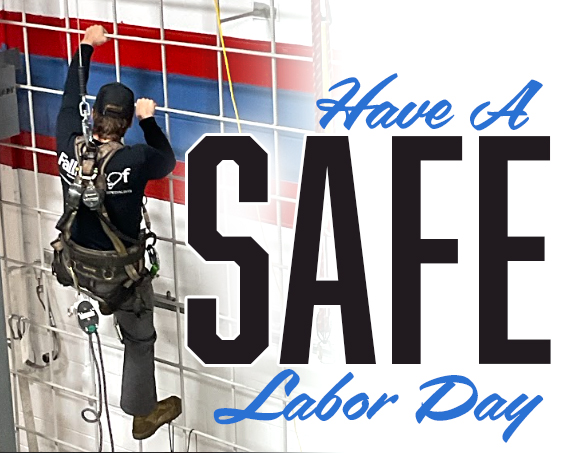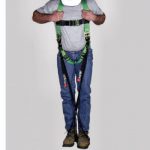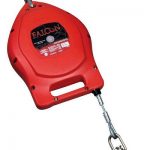3 Simple Steps To Prevent Unnecessary Tragedies
Falls continue to be the leading cause of death in the construction industry. According to the Bureau of Labor Statistics, there were 865 fatalities due to slips, trips and falls in 2022. Sadly, 700 of these fatalities were the result of falls from elevated heights, such as ladders or roofs, to lower levels. That is almost two worker fatalities every day, on average, from falls to lower levels. These alarming statistics are a great concern!! Four out of the Top 10 Violations are in the Fall Protection World.
Employers play a crucial role in making sure safety measures are followed. While circumstances may vary for each incident, here are 3 simple steps they can and should take to prevent these unnecessary tragedies.
- Plan ahead to get the job done safely – Employers and supervisors overseeing work at heights should proactively plan projects and integrate safety from the beginning. For example, if the surface is slippery or if the winds are strong, does the work need to be done at that time? What can be done to mitigate hazards?
Examine the work site proactively to identify potential hazards and obstacles. Prioritizing safety from the planning stage allows the teams to adapt and reprioritize efforts and resources as needed.
Make sure your JHA/JSA/Safety Plan is current, and all parties understand the current hazards as the construction changes.
Violation #1 Fall Protection 1926.501
- Proper PPE – Workers exposed to fall hazards must have the appropriate tools and equipment for their work conditions. Equip workers with fall prevention safety-compliant equipment such as anchor systems, guardrails, proper scaffolding, personal fall arrest systems (PFAS) and correctly fitted harnesses.
Keep in mind protective equipment designed for men may not adequately fit or provide proper protection for women. Ensure construction workers of all sizes are fitted properly with safety gear and are trained to wear it properly.
Violation #7 Fall Protection Training Requirements 1926.503
- Train everyone. Every worker must be trained to use the equipment to do the job safely. Training should cover safety practices, emergency procedures and correct equipment usage in a language they understand. Imagine a scenario where workers hear a site manager training them say, “Make sure you tie-off” when working at a height. Now imagine those workers understanding that to mean “take the tie off” and remove a rope rather than ensuring they are secured to a point that will keep them from falling to a lower level. Clear communication that workers understand is paramount to ensuring that workers can perform their jobs safely and effectively.
Always have a plan to provide for prompt rescue of employees in the event of a fall or ensure that employees know how to rescue themselves.
We must do more to protect these workers. Employers and supervisors should lead by example when it comes to worker safety. Encourage and motivate safety compliance as a core value through safety programs that promote a safety-conscious culture and reward employees for helping make their workplaces safer.
Let’s work together to prevent fall hazards and remind everyone to prioritize safety management systems. These simple yet critical actions can make all the difference in saving lives.
Follow us on these platforms to stay aware of Fallproof’s protection solutions.




